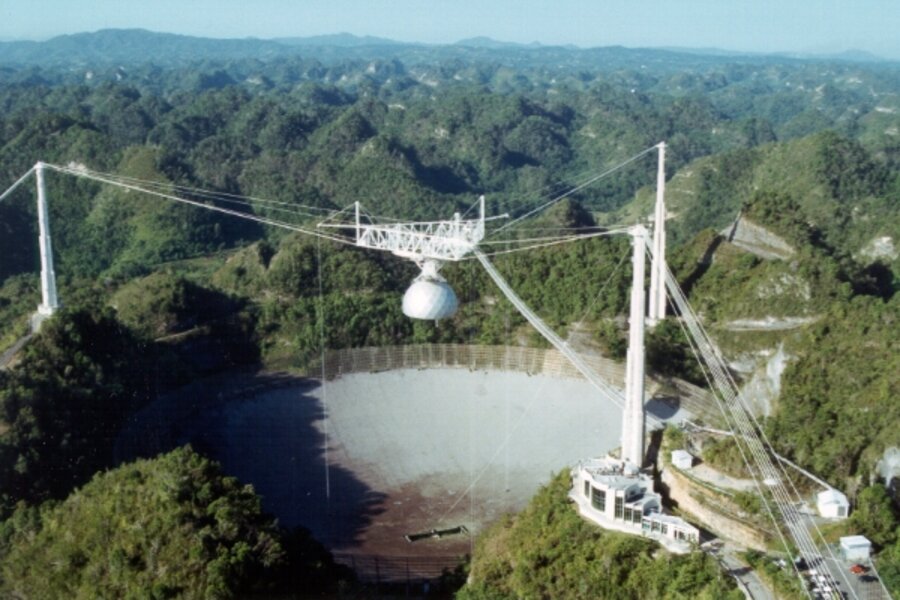SETI@home@10: Global hunt for ET enters its second decade
Loading...
ET hasn't phoned home yet, but Earthlings are still wishin', and hopin', and thinkin', and listenin'.
The University of California at Berkeley's SETI@home project (that is, the Search for Extraterrestrial Intelligence – at home) entered its second decade this week. It's the granddaddy among projects that tap the unused capacity of Internet-connected home computers for science.
The project started up May 17, 1999, and within three months had drawn more than 1 million people worldwide into the project. Over the course of the decade, five million people have signed up at various times. But these days, the project is down to 140,000 participants.
Remember Moore's Law? Something about the number of transistors one can pack into a computer chip – essentially the horsepower behind computers – doubling every two years. Those 140,000 people represent more computing power than ever, "thanks to the steadily increasing power of computer processors," says David Anderson, the project's director.
The project still draws occasional harrumphs from people who say the likelihood of hearing anything other than static is too small to measure.
But if nothing else, SETI@home has triggered a minor revolution for science projects that need heavy-duty computing but don't have a supercomputer at scientists' beck and call. By one estimate, more than 80 projects are tapping computers owned by everyman – projects ranging from climate modeling to a hunt for proteins involved in diseases.
In a celebratory statement ahead of a symposium scheduled for Thursday, chief scientist Dan Werthimer acknowledges that the effort is "looking for needle in a haystack."
But, he adds, "we're in this for the long haul.... As long as we have some way to increase the sensitivity of our radio detectors or the frequency range, or the part of the sky we're looking at, we'll still be doing something worthwhile."
In the meantime, the video below might yield clues as to why ET is maintaining radio silence so far.





